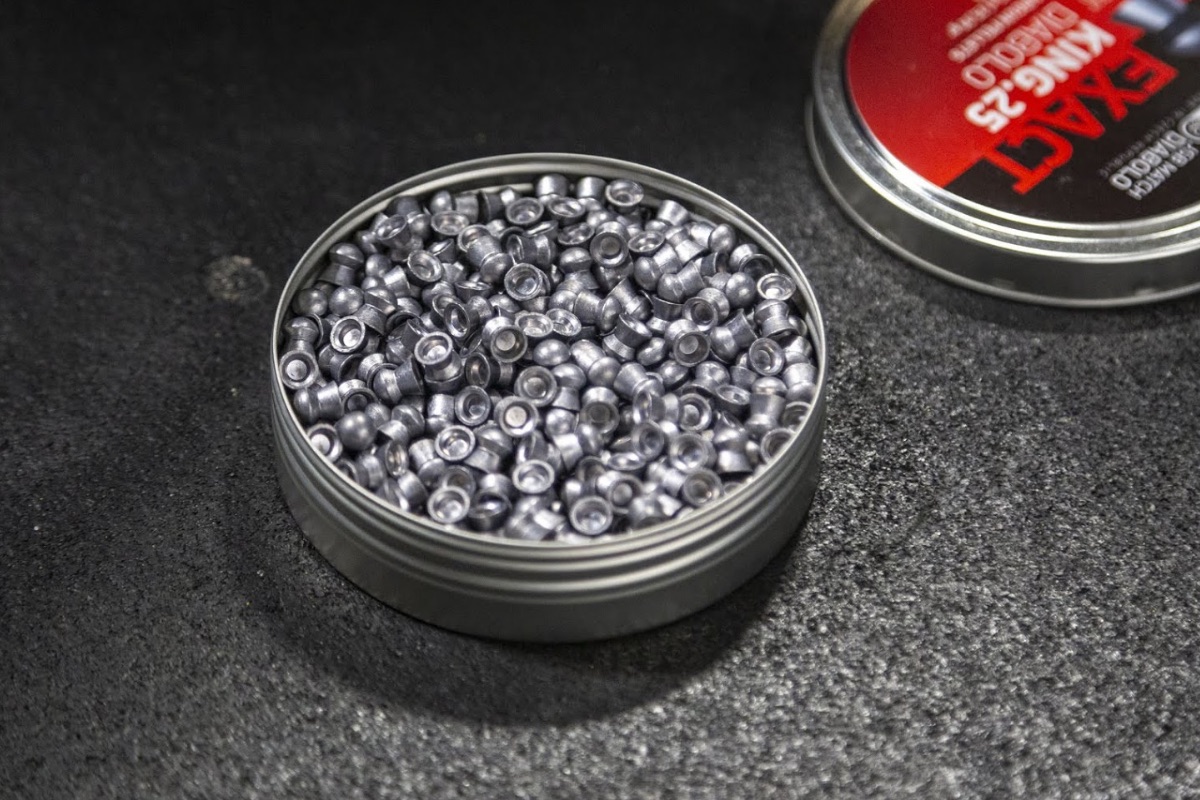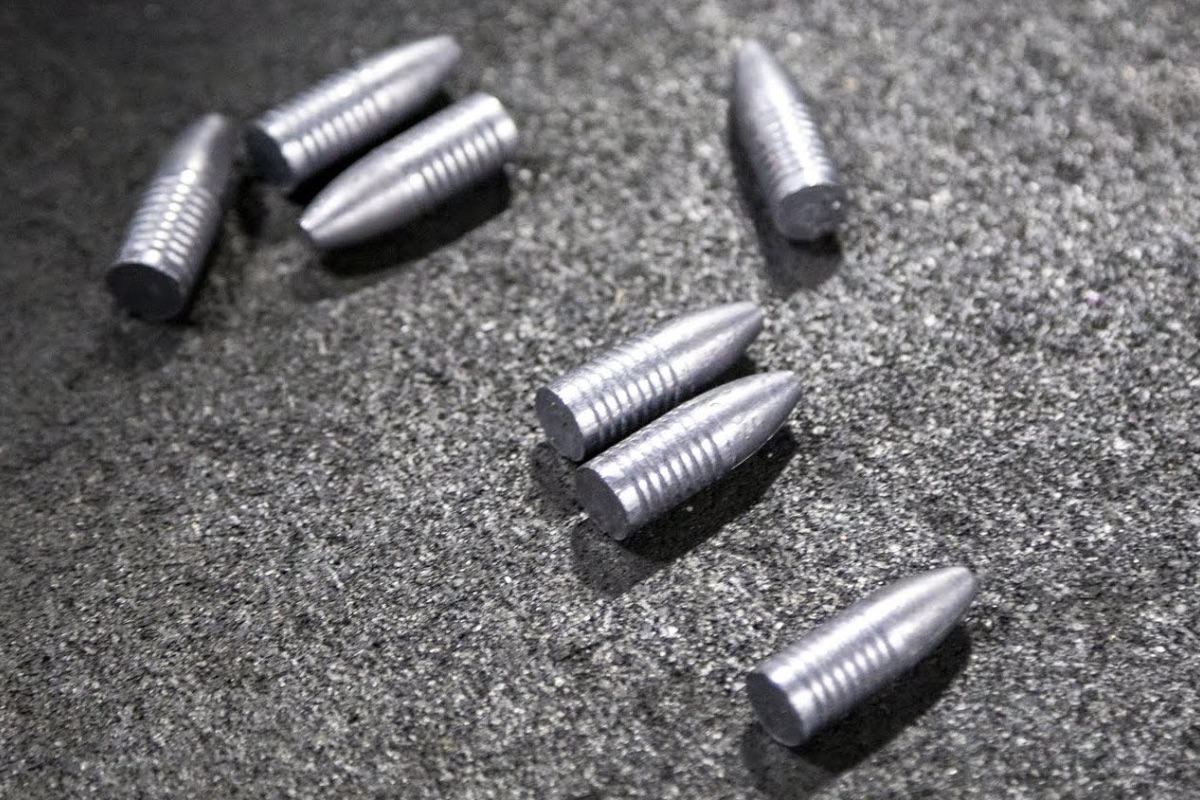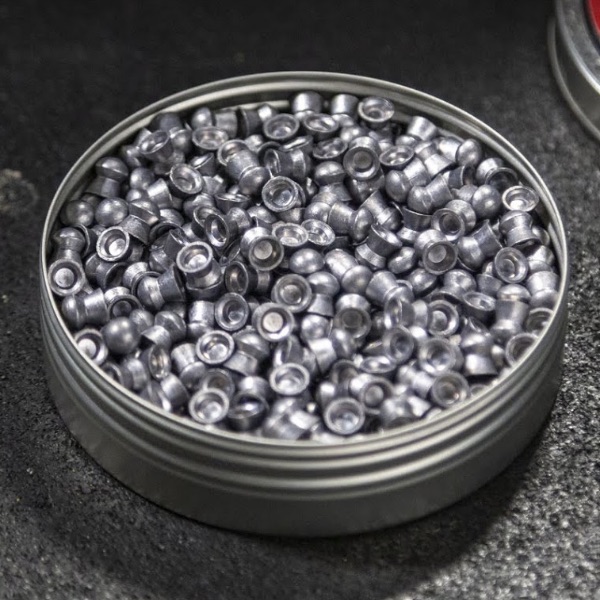While the current trend in airgun ammunition seems to be moving toward slugs, there’s a good reason for most airgun shooters to stick with pellets. But what’s the difference between them and why are pellets the better choice for most air gunners? That’s a very good question!

Basics
Traditional pellets, whether they be wadcutter, hollow point, pointed or domed, all have some basic characteristics in common. They all have hollow skirts, a skinny waist, and a forward center of gravity. If you think of a pellet as a tiny lead shuttlecock from your days of playing badminton, you’ll quickly understand why they work. This shape is referred to as diabolo, which gets its name from a juggling toy that has two opposing cup-shaped ends joined by a narrow waist. Not to be confused with diablo which is “devil.”
What does the diabolo design accomplish? Let’s look back at the badminton shuttlecock. No matter how hard, or where you hit that shuttlecock, it always turns, faces the right direction, and bleeds velocity extremely quickly. A traditional pellet does the same thing. The heavier front “nose” followed by a narrow “waist” and the lighter flailed “skirt,” will orient the pellet nose-first in flight. This helps them to be more accurate and stable, specifically in lower velocity, non-rifled barrels.
Skirt
Starting with the skirt of the pellet, there’s a reason that it’s hollow. The thin hollow skirt is specifically designed to expand and grip the inside of the barrel, making a tight seal as the air pushes it out the muzzle. This works on both smooth bore as well as rifled barrels.
Waist
In order for the skirt to be a skirt and act like fletching on an arrow, or the feathers on a shuttlecock, you need a skirt with a diameter less than that of the pellet itself. This narrow skirt is critical to the diabolo shape. As the air passes over the nose it’s destabilized and then runs into the flailed skirt causing increased drag. Like the shuttlecock, this drag, combined with the heavier nose, helps keep the pellet facing the right direction. The downside is that drag bleeds velocity quickly, reducing the effective range of all pellets. This is one reason some shooters are moving to slugs for their airguns, they are simply more efficient at longer ranges.
Nose
The nose is essentially the “business” end of the pellet. It’s the part that’s going to impact the target and either punch that clean hole in paper or deliver the energy to take down game. It’s the part that gets the job done on target.
The pellet’s nose also determines what type of pellet, i.e. flat – wadcutter, round – round nose, hollow – hollow point, pointed – pointed. It’s really self-explanatory when you think about it. Each pellet type lends itself to a particular shooting discipline.
What About Slugs?
As mentioned early in this article, the push to start using slugs in airguns is gaining more and more popularity. But is it the right move? The short answer is maybe. There are places where slugs are absolutely the right call. Long-range shooting for example i.e. distances beyond 100 yards. At long range, slugs are going to outperform pellets nearly all the time. They have a much better ballistic coefficient thereby retaining stability and energy at range.

The key will be to find a slug that’s accurate, and that’s the rub. Airgun barrels are designed to shoot pellets NOT slugs. This is certainly changing on higher-end PCP airguns and with purpose-built slug guns, but most airguns coming off assembly lines are going to prefer pellets over slugs.
Stick with Pellets, Most of the Time
Unless you are shooting and/or hunting at 100+ yards, then pellets are probably going to be your best option for many of the reasons we’ve discussed in this article. The primary goal for airgunners comes down to pure accuracy. Pellets, given the volume of different shapes, sizes, weights, and physical composition provide shooters with different options to see the best accuracy for hunting, target shooting, plinking, and match competition.
For the most part, pellets will do as well or better than slugs in most airguns when shooting inside 100 yards. But don’t just take our word for it! Do your own testing and exploration, and if you need help along the way, just reach out to us here at Airgun Depot. We are always here to help you get the most out of your airgunning experiences.
